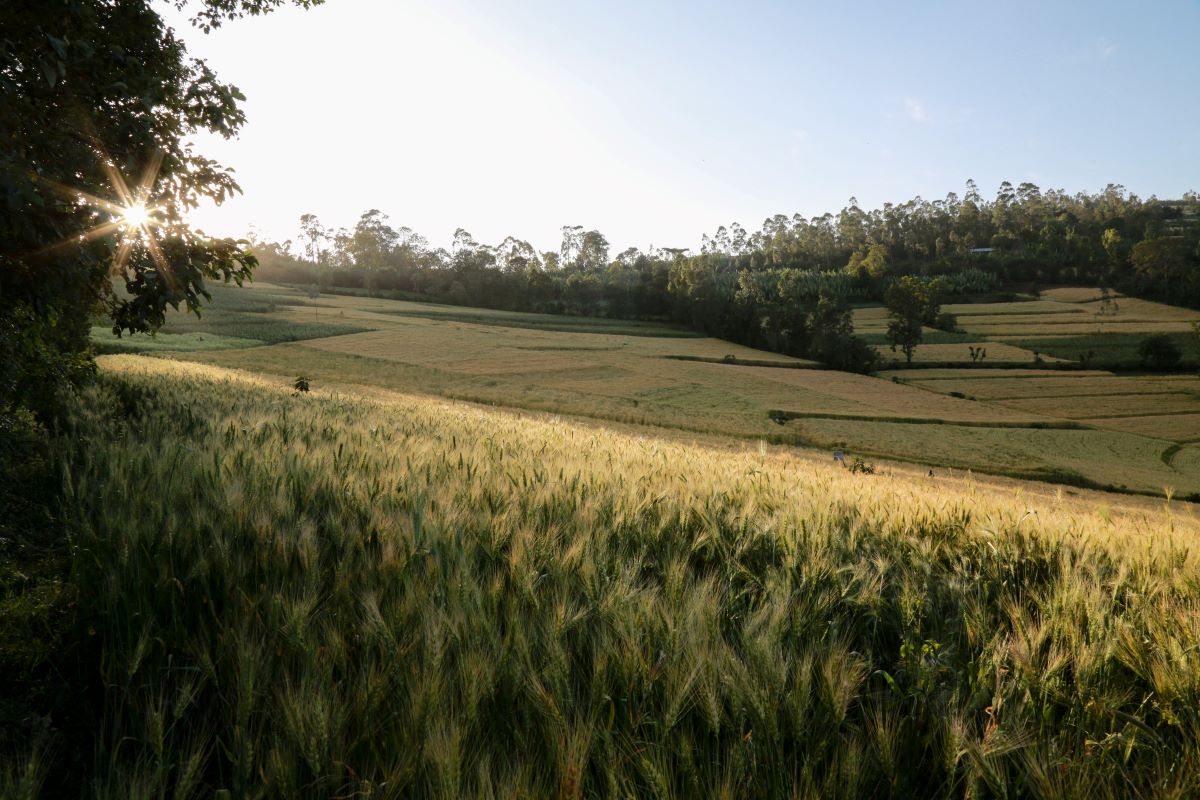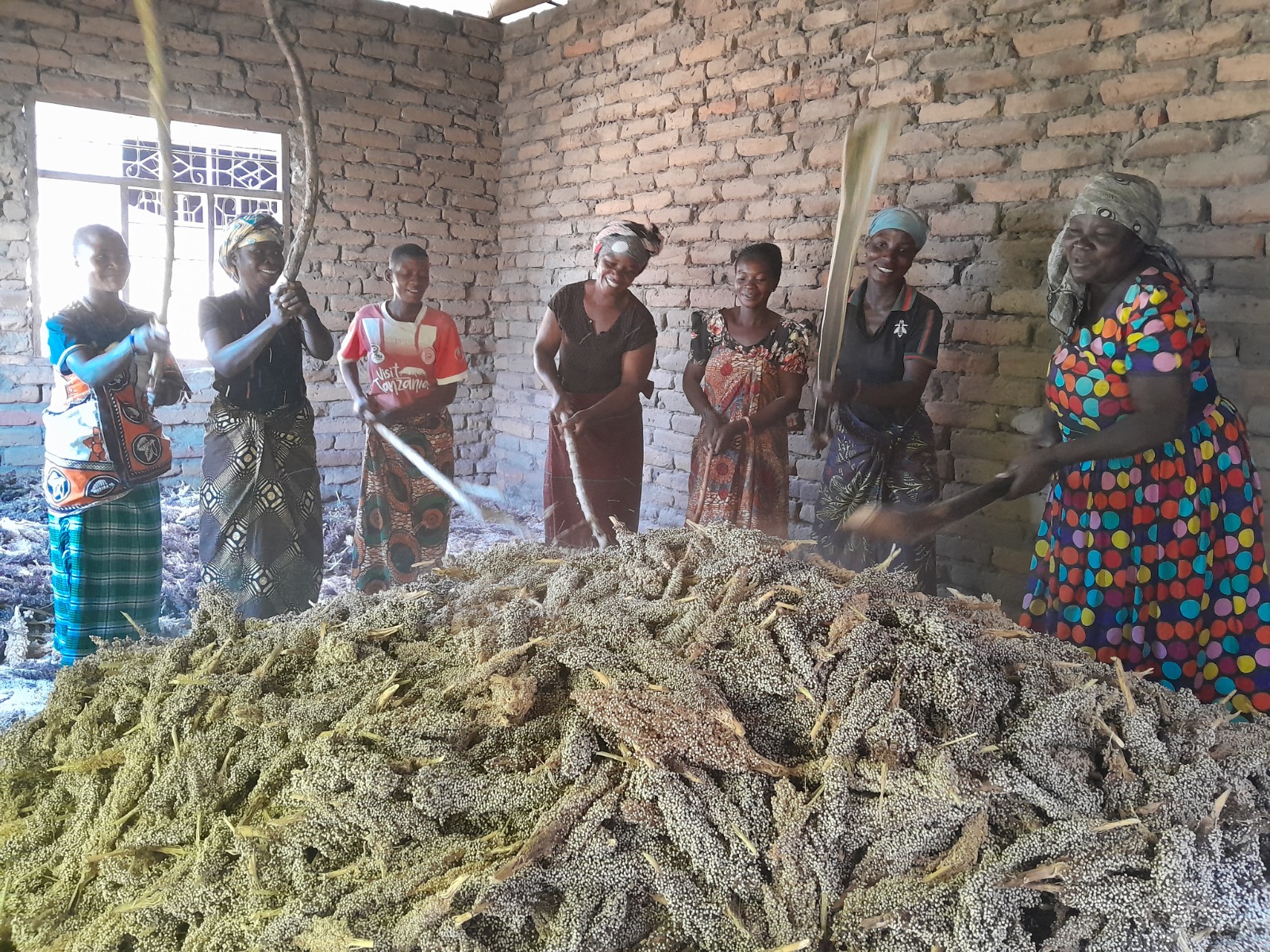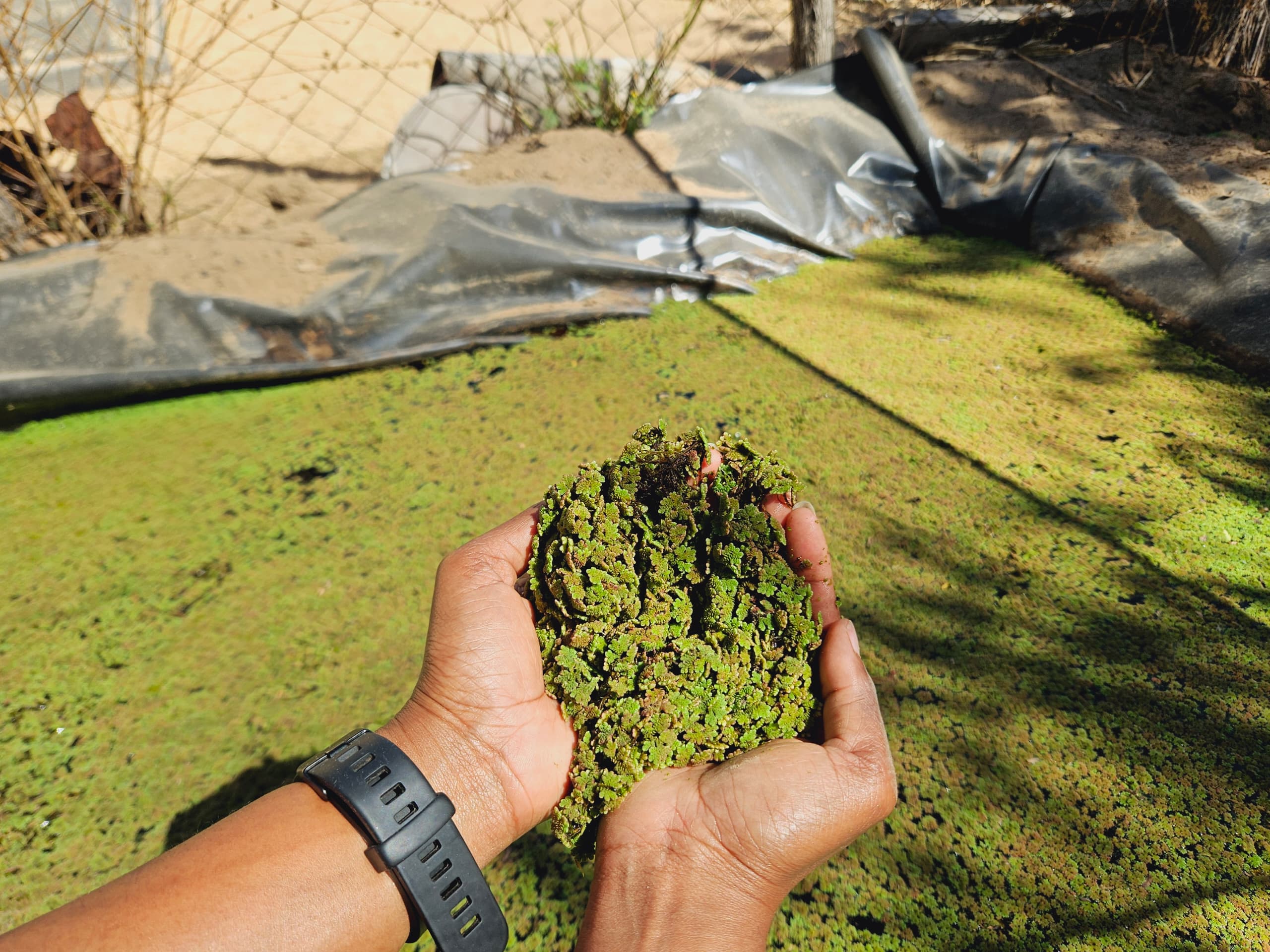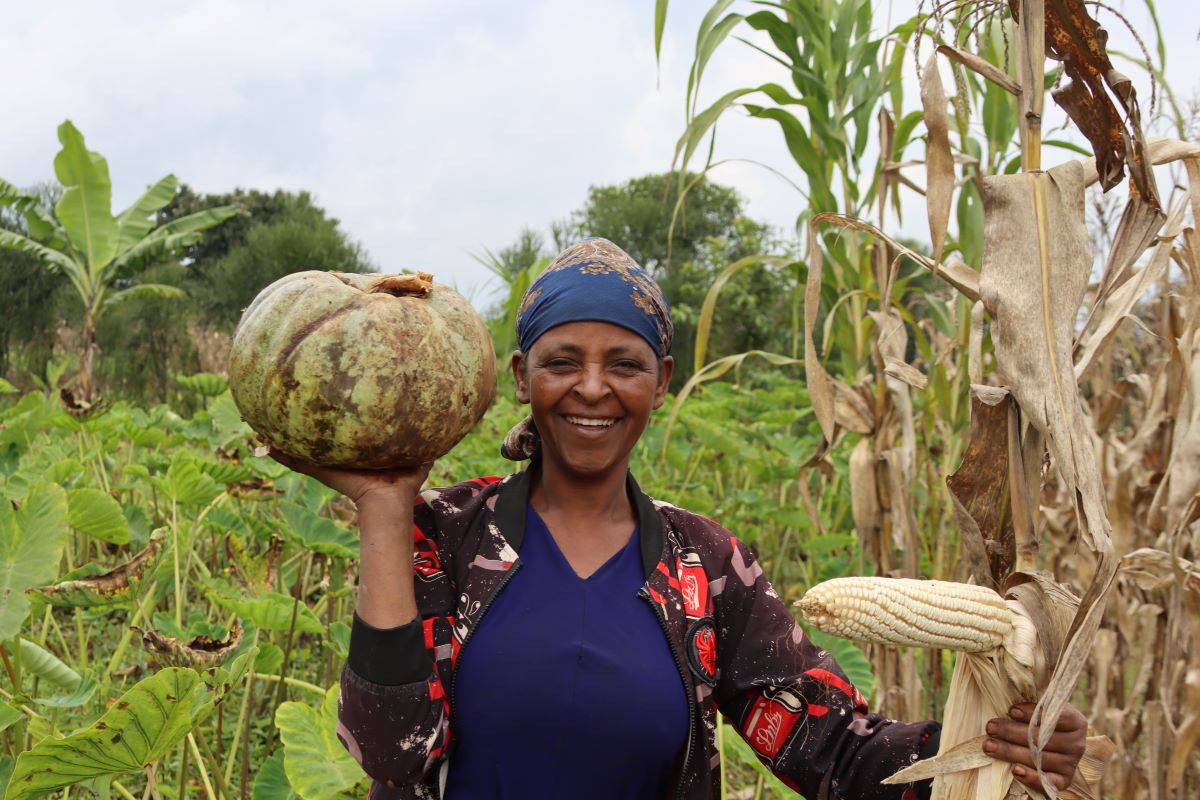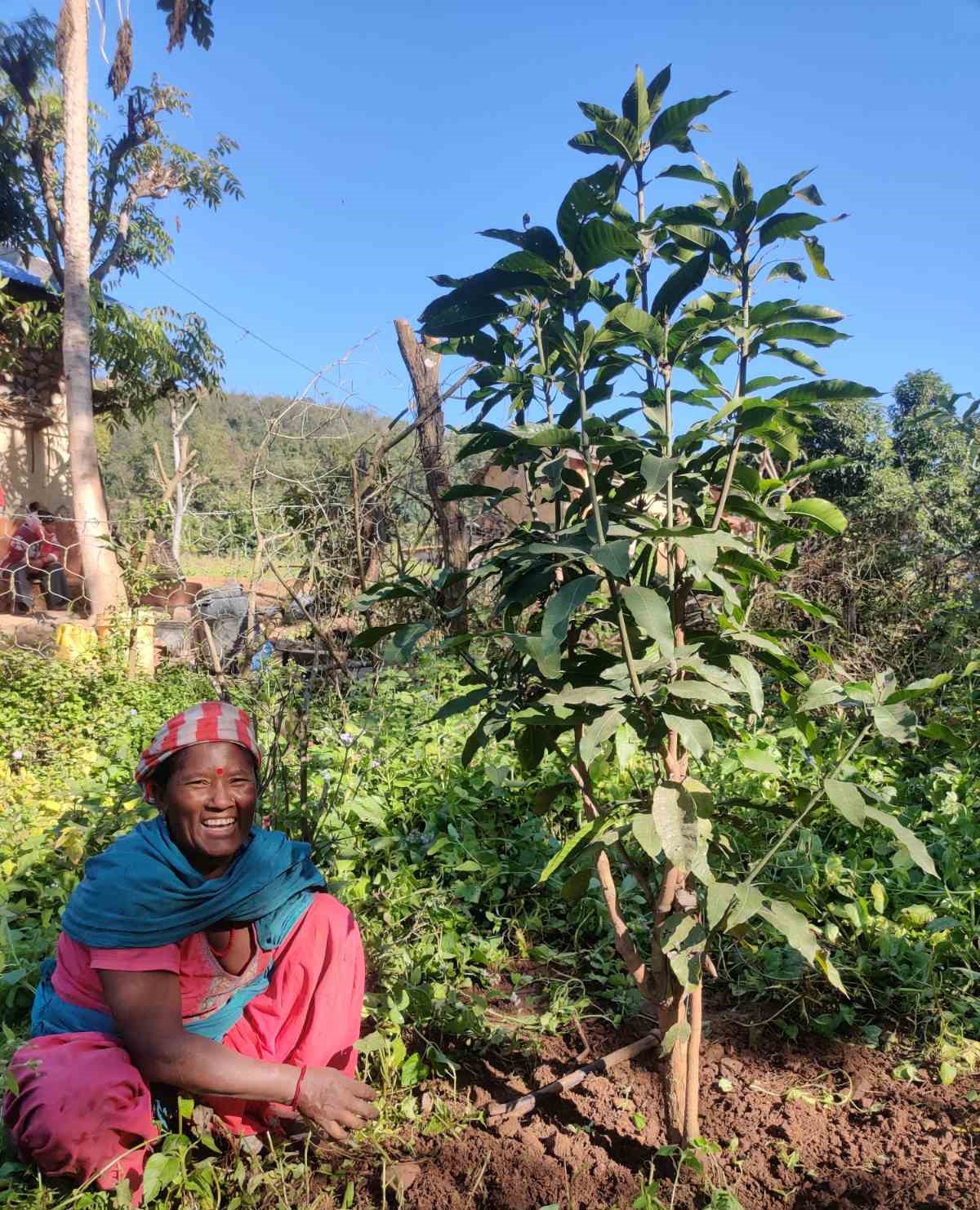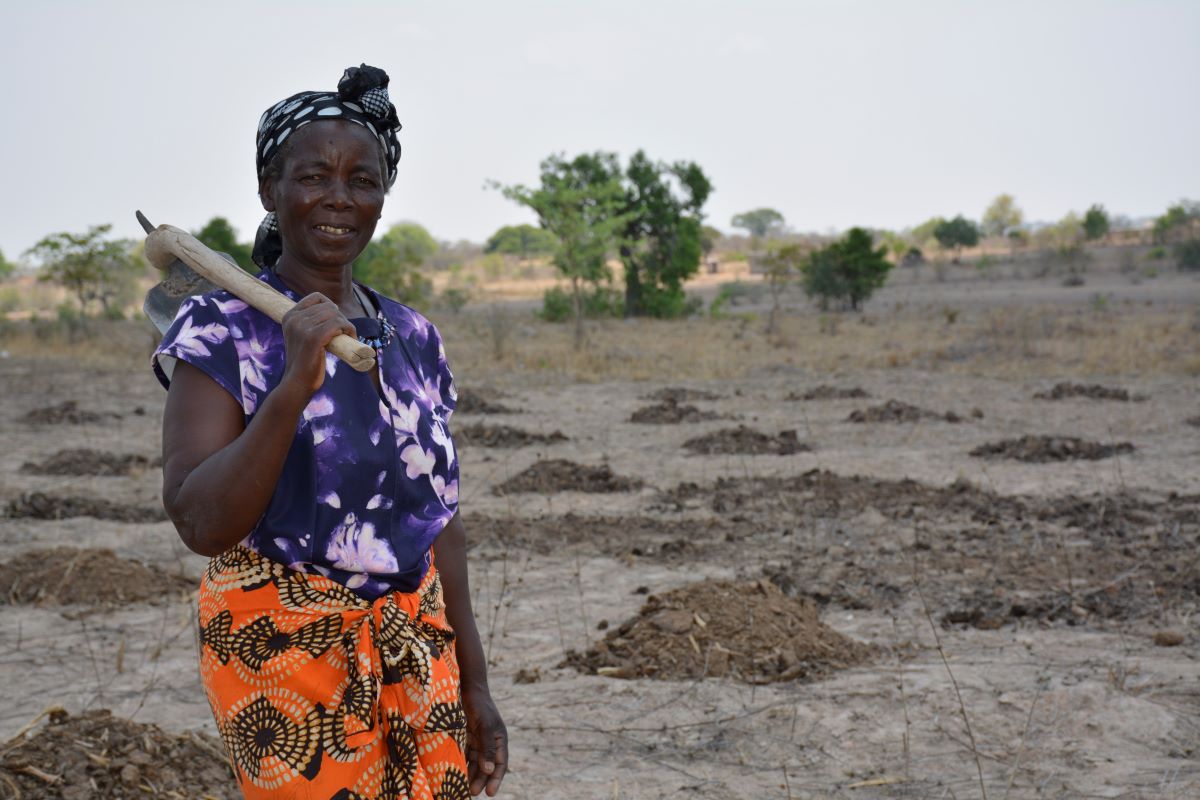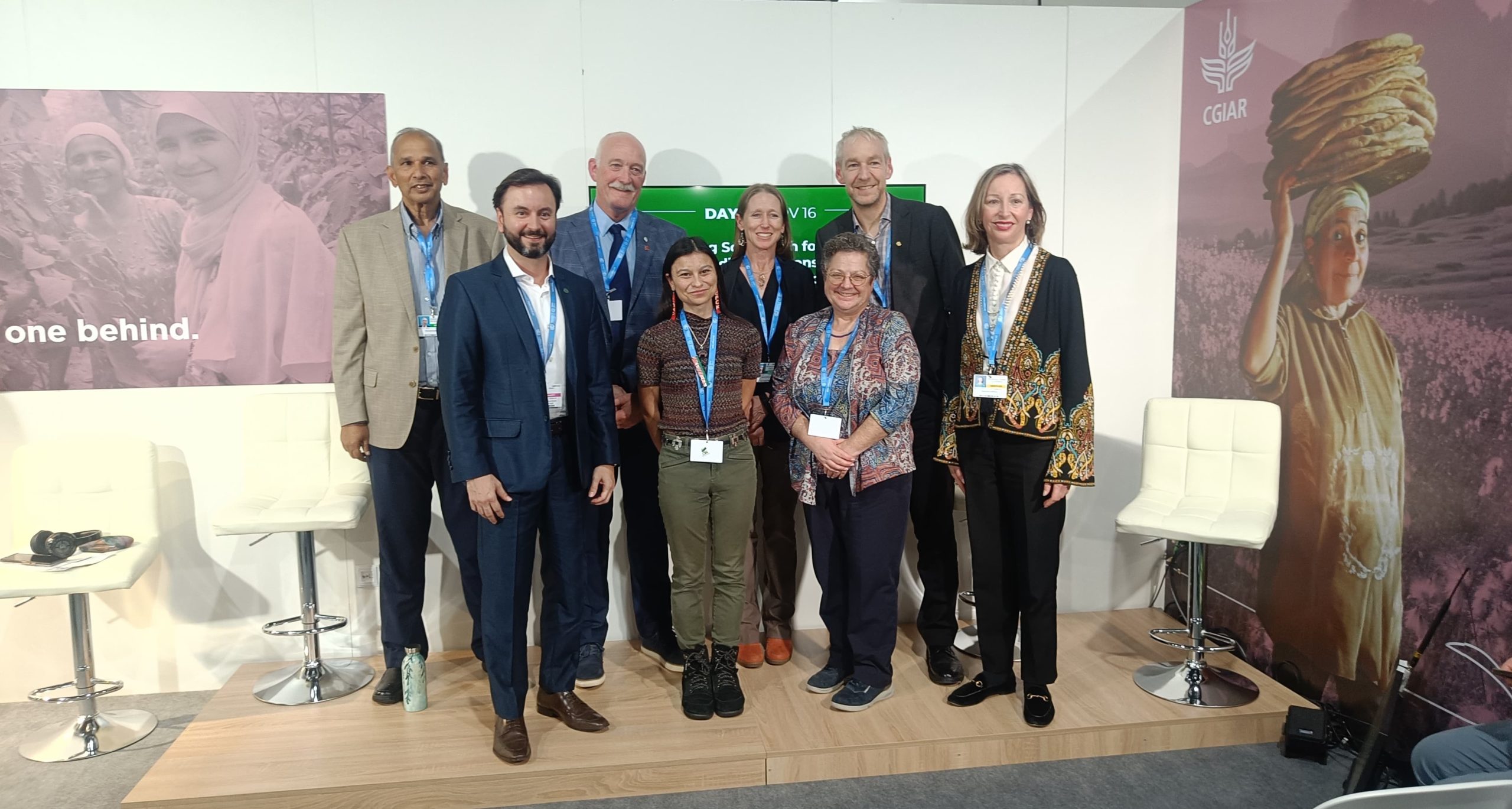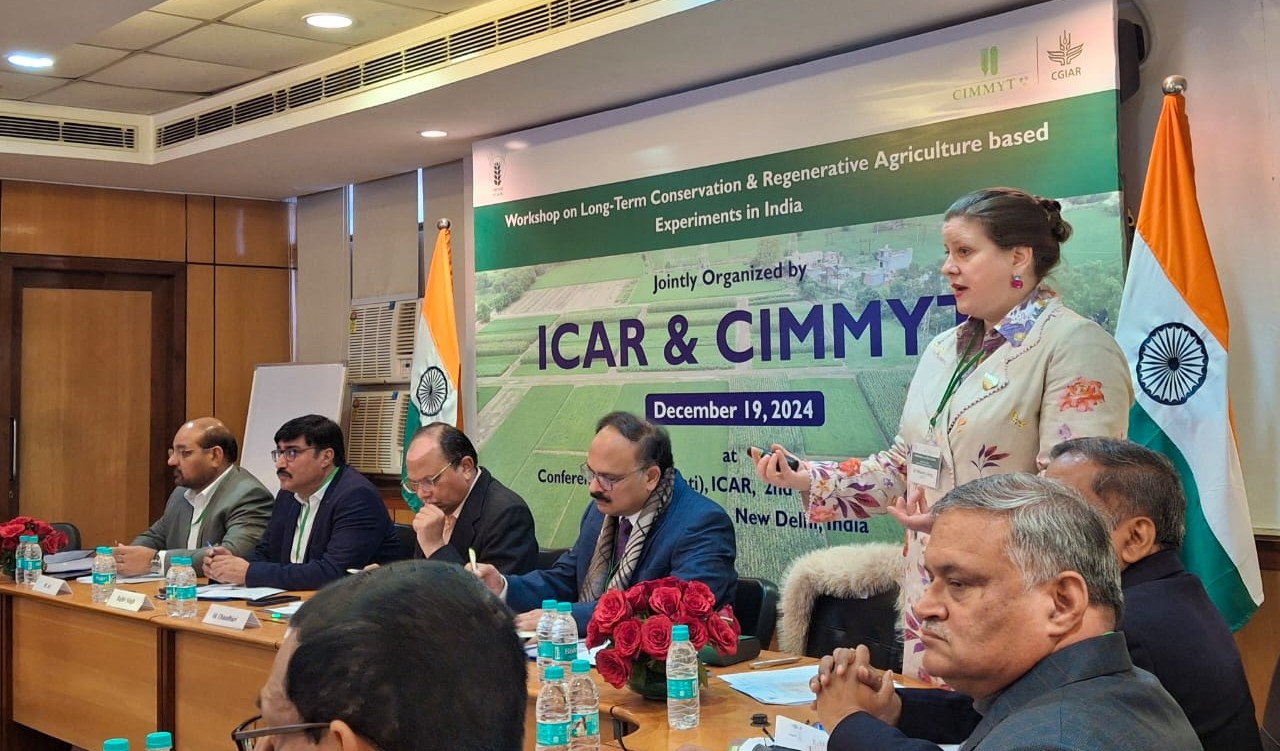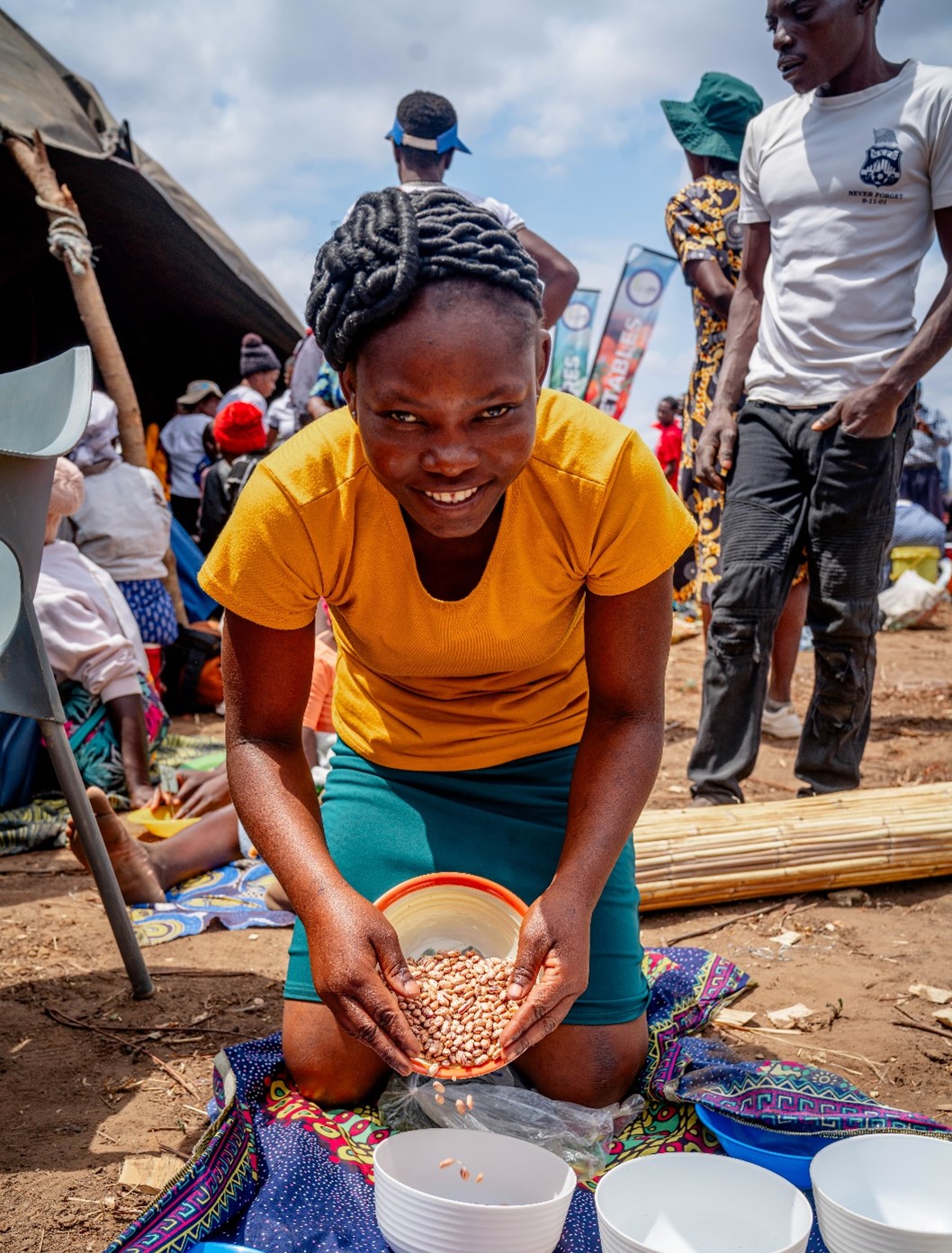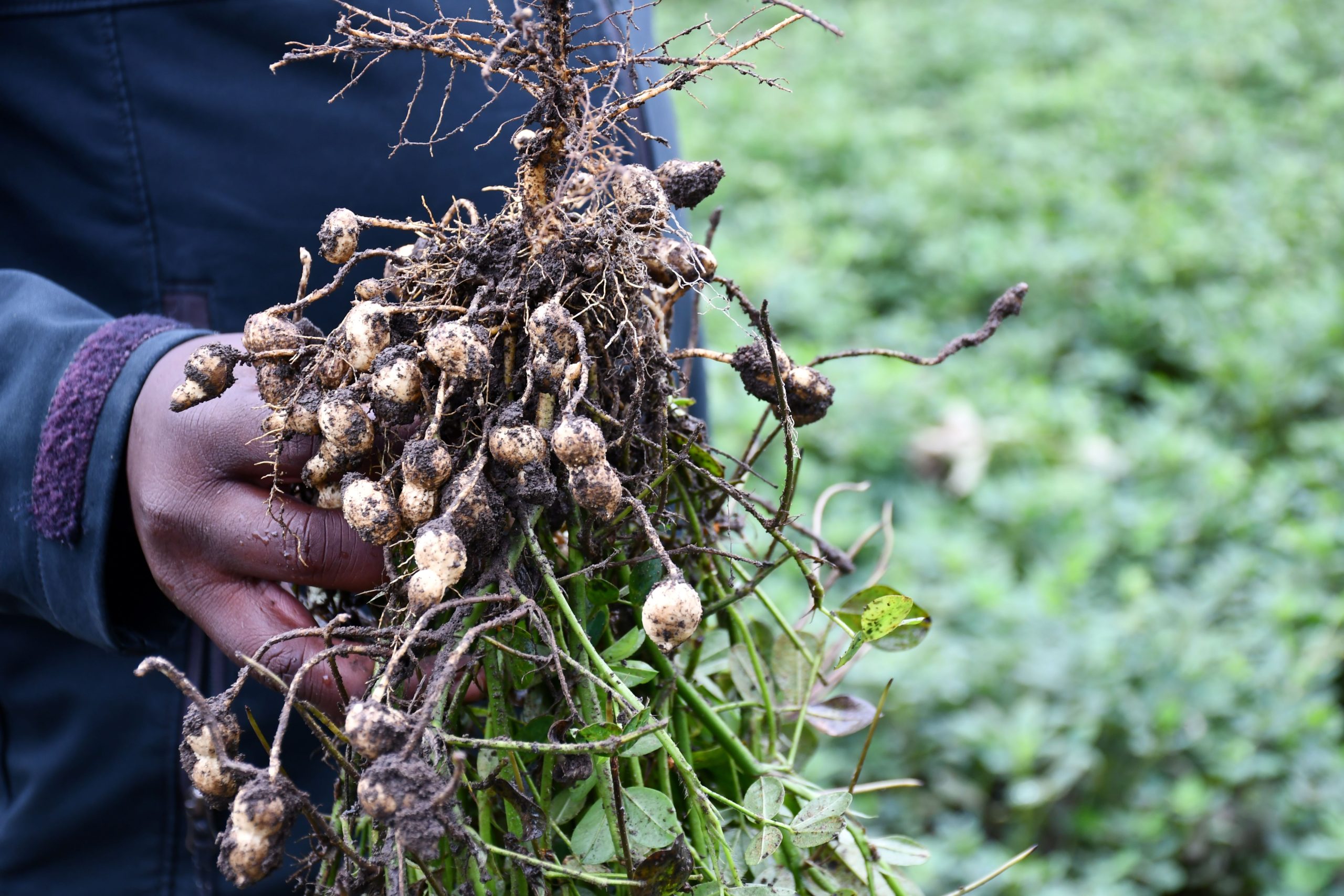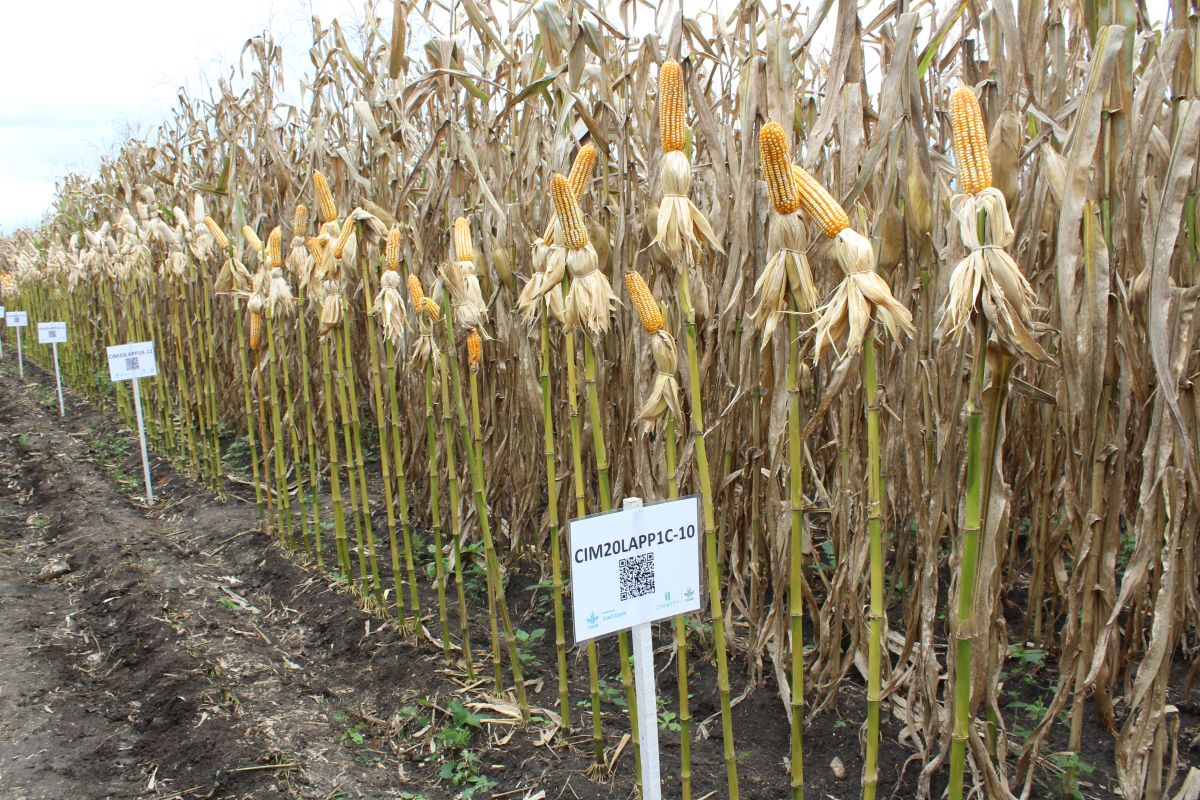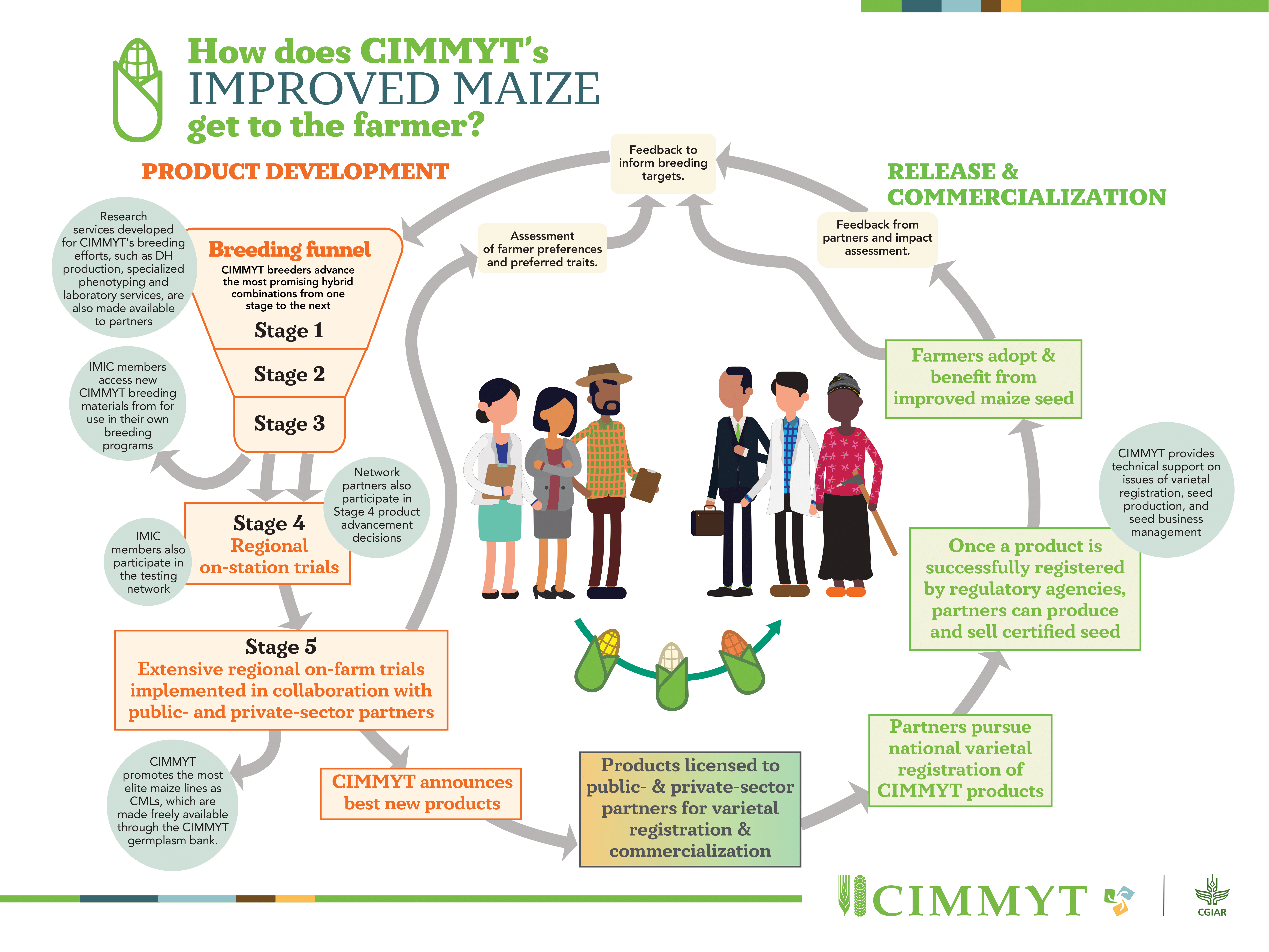Innovations
Working with smallholders to understand their needs and build on their knowledge, CIMMYT brings the right seeds and inputs to local markets, raises awareness of more productive cropping practices, and works to bring local mechanization and irrigation services based on conservation agriculture practices. CIMMYT helps scale up farmers’ own innovations, and embraces remote sensing, mobile phones and other information technology. These interventions are gender-inclusive, to ensure equitable impacts for all.
CIMMYT donates agricultural implements to Gwebi
 Capacity development
Capacity development
Source: The Herald ()
CIMMYT is modernizing breeding in Zimbabwe with machinery to enhance research and climate-resilient maize production
Time Running Out to Avert Food Catastrophe, but There Is Hope
 Climate adaptation and mitigation
Climate adaptation and mitigation
CIMMYT advances scientific innovations to boost crop productivity, resilience, and global food security
How Ivuna women farmers are transforming their lives through seed production
 Capacity development
Capacity development
In Ivuna Village, Tanzania, a determined group of women leveraged Vikoba loans, mentorship, and improved sorghum seeds to transform their livelihoods, boost household incomes, and inspire others in their community
Exploring Azolla Farming as a Sustainable Feed Source for Poultry in Murehwa, Zimbabwe
 Capacity development
Capacity development
Azolla is enhancing sustainable poultry farming in Murehwa, Zimbabwe, through its integration into CIMMYT-led Agroecology Initiative efforts
Scaling Conservation Agriculture-based Sustainable Intensification in Ethiopia (SCASI): Empowering Farmers and Engaging Development Partners
 Climate adaptation and mitigation
Climate adaptation and mitigation
CIMMYT is empowering Ethiopian farmers with sustainable practices that boost productivity, improve soil health, and build resilience to climate change
Sowing a Seed of Hope: Transforming Lives through Mixed Farming in Nepal
 Innovations
Innovations
In Nepal, CIMMYT’s Mixed Farming Initiative transforms traditional farming into sustainable, resilient systems for marginalized communities
Tecnologico De Monterrey Develops Nutraceutical Corn to Address the Global Food Crisis and Improve Health
 Innovations
Innovations
Source: barchart ()
Tecnologico de Monterrey and CIMMYT developed nutraceutical corn to enhance nutrition and advance food security
Why early-stage on-farm sparse testing could be a game changer for crop breeding in Africa
 Climate adaptation and mitigation
Climate adaptation and mitigation
Early-stage on-farm testing tailors crop breeding to the realities of smallholder farmers, increasing efficiency and impact.
CIMMYT visit celebrates strategic scientific partnership
 Capacity development
Capacity development
Source: John Innes Centre ()
CIMMYT and the John Innes Centre are advancing global wheat research through a strategic partnership focused on innovative solutions for disease resistance, productivity, and sustainable food systems
The 29th Conference of the Parties (COP29): Navigating Food Systems and Climate Challenges
 Climate adaptation and mitigation
Climate adaptation and mitigation
At COP29, CIMMYT highlighted science-driven innovations to transform food systems and strengthen climate resilience
CIMMYT-ICAR Workshop on Long-Term Agricultural Experiments
 Climate adaptation and mitigation
Climate adaptation and mitigation
CIMMYT and ICAR’s workshop on Long-Term Agricultural Experiments fostered collaboration to advance sustainable agriculture and climate resilience
Promoting mechanized farming technologies in Mbire and Murewa through the Agroecology Fairs
 Capacity development
Capacity development
Scaling access to mechanization through local service providers and innovative financing models, CIMMYT is empowering smallholder farmers in Zimbabwe to enhance productivity, reduce labor, and create new livelihood opportunities
How one farmer is learning and leading the way in improved millet and groundnut seed production in Uganda
 Innovations
Innovations
Through access to drought-tolerant and disease-resistant crop varieties, Dennis Obua transformed a handful of seeds into a thriving farm, inspiring an entire community to embrace resilient farming practices
Four New CIMMYT maize hybrids available from LATAM Breeding Program
 Innovations
Innovations
CIMMYT introduces four new high-yielding maize hybrids, now available for licensing to bring resilient varieties to farmers in Latin America
Five New CIMMYT maize hybrids available from Southern Africa Breeding Program
 Innovations
Innovations
CIMMYT announces the release of five new, improved tropical maize hybrids for licensing, offering drought tolerance, high yield, and resistance to key diseases, tailored to enhance productivity in stress-prone agroecologies of Southern Africa

